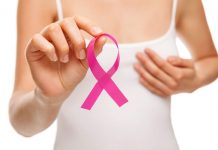Breast Cancer is one of the oldest forms of cancerous tumor that mostly occurs in women.
It stands in the second position after the Lung cancer.
It is estimated that one out of every eight women will develop breast cancer at some time in their life.
It occurs very rarely in women below 35.
The risk of developing breast cancer increases in women who passed menopause stage.
If you are with a significant family history of breast cancer, then you have a higher risk of developing this disease.
So, it is a good idea to have breast screening to remain safe.
The breast screening is a way of finding this cancer early. Every year, in the UK, about 1.5 million women undergo breast screening as part of the NHS Breast Screening Program (NHSBSP).
Breast cancer occurs when cells in the breast begin to grow out of control and can then invade nearby tissues or spread throughout the body.
Cells are tiny building blocks of the organs and tissues of the breast, which constantly become old and die. These cells are replaced with new cells. Normally, the division and growth of cells is controlled but when it becomes out of control, a cancer occurs where the cells will continue to divide and becomes a lump.
The detection of breast cancer is very difficult initially because the symptoms of breast cancer will not exhibit until the cancer is in its later stages of growth and may have already spread cancer cells to other vital areas of the body.
Therefore, it is very important for you to get checked for breast cancer regularly. Mammograms are the best early detection methods for breast cancer.
The most clear and common breast cancer sign is of course a lump in your breast. It is very important to remember that not all lumps are cancerous. Lumps (numerous) in the breast will develop especially during periods due to rapid hormonal changes, which is very common in women. Some women will have more lumps than others.
Further breast cancer detection will lead to pain in your breasts. A cancer that has developed large enough to impose on nerves will be a traceable lump in a self-check or mammogram, so catch anything hopefully before it gets to the point of causing pain.
When one or both of your breasts are paining, again remember that it is not necessarily a breast cancer. The pain or tenderness of the breasts is common during puberty and periods due to hormone changes. It is also common due to pregnancy and some of its medications.
Although the breast cancer is most common in women over 40, it is occasionally diagnosed in teens and twenties as well. So, starting from puberty it is a good idea to have self-checked for lumps.
Also remember that during this period a lot of lumps will be noticed that are harmless. So, with some experience and consultation with your doctor, you’ll soon get an idea of the kinds of lumps that are normal, and the kinds of lumps that may be symptoms of breast cancer.







The significant decrease in breast cancer mortality, which amounts to nearly 30 percent since 1990, is a major medical success and is due largely to earlier detection of breast cancer through mammography screening.